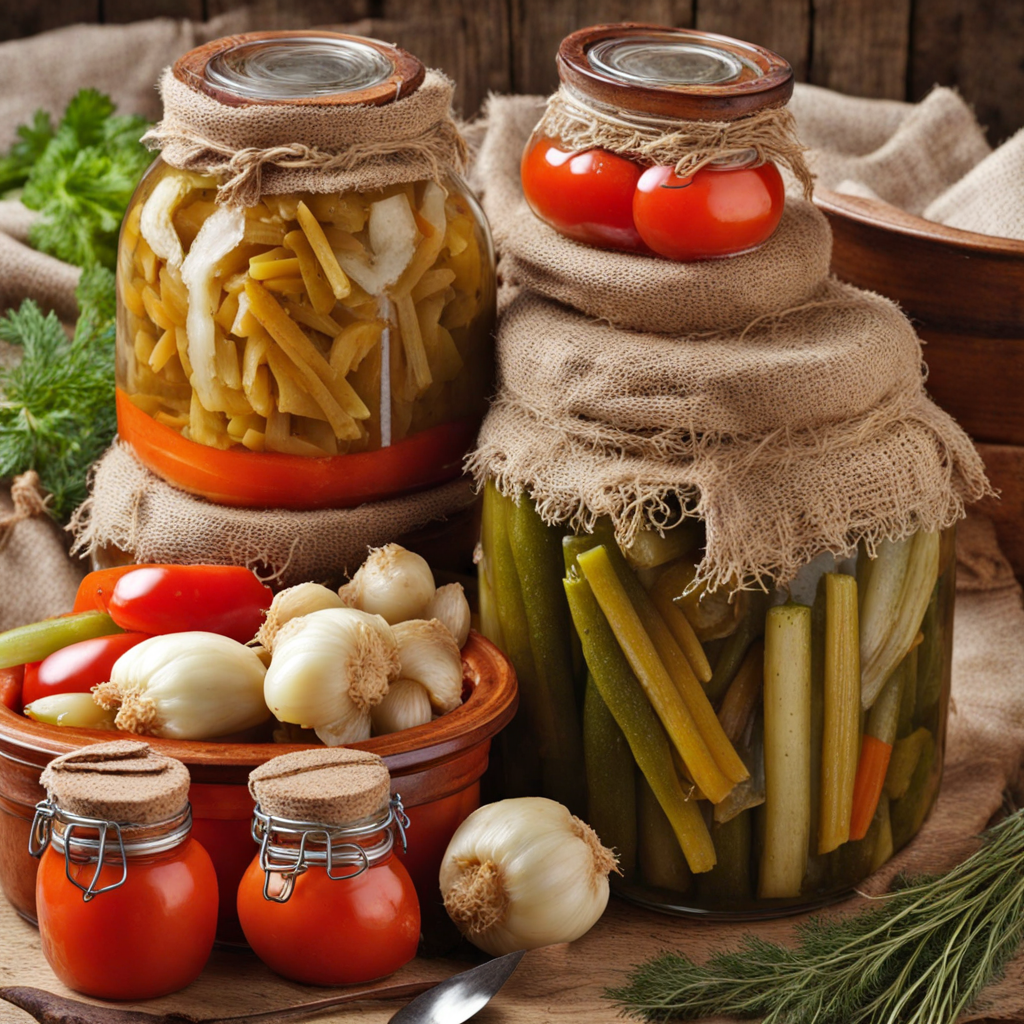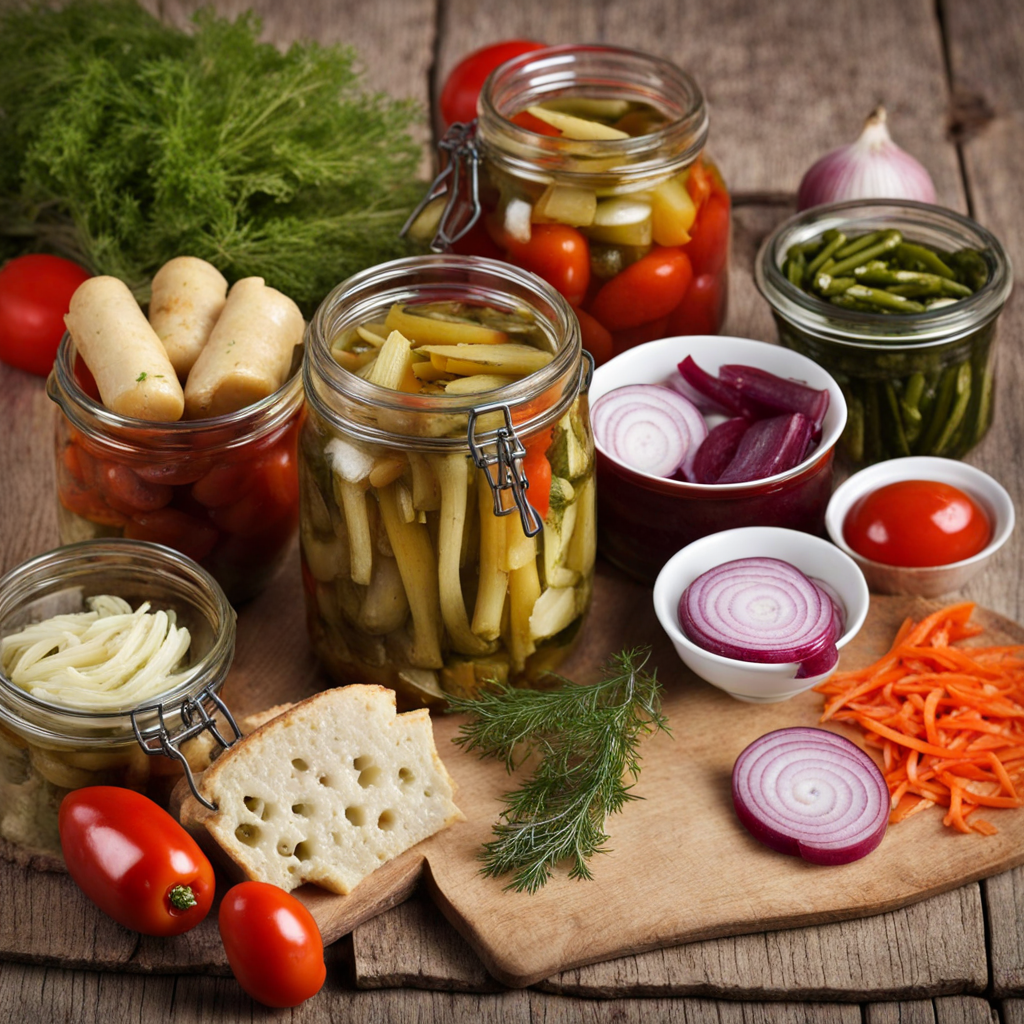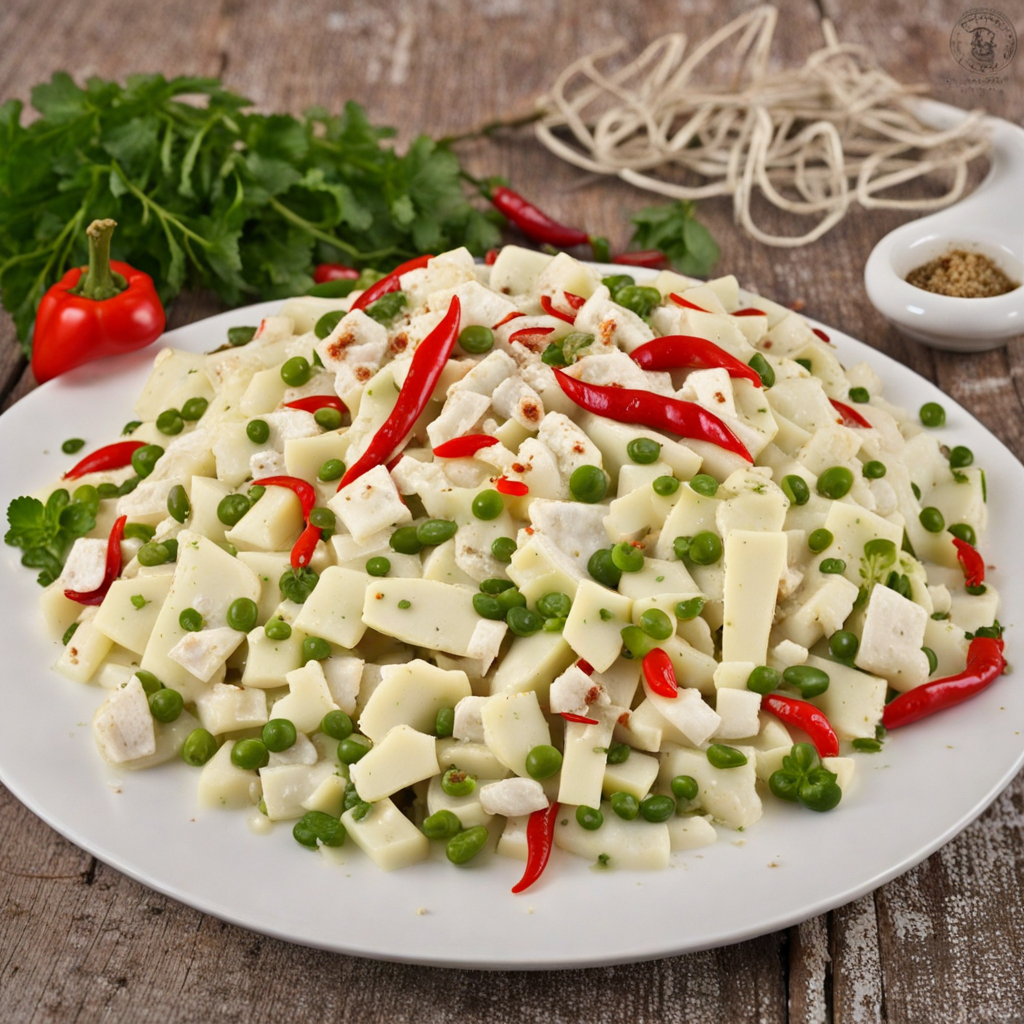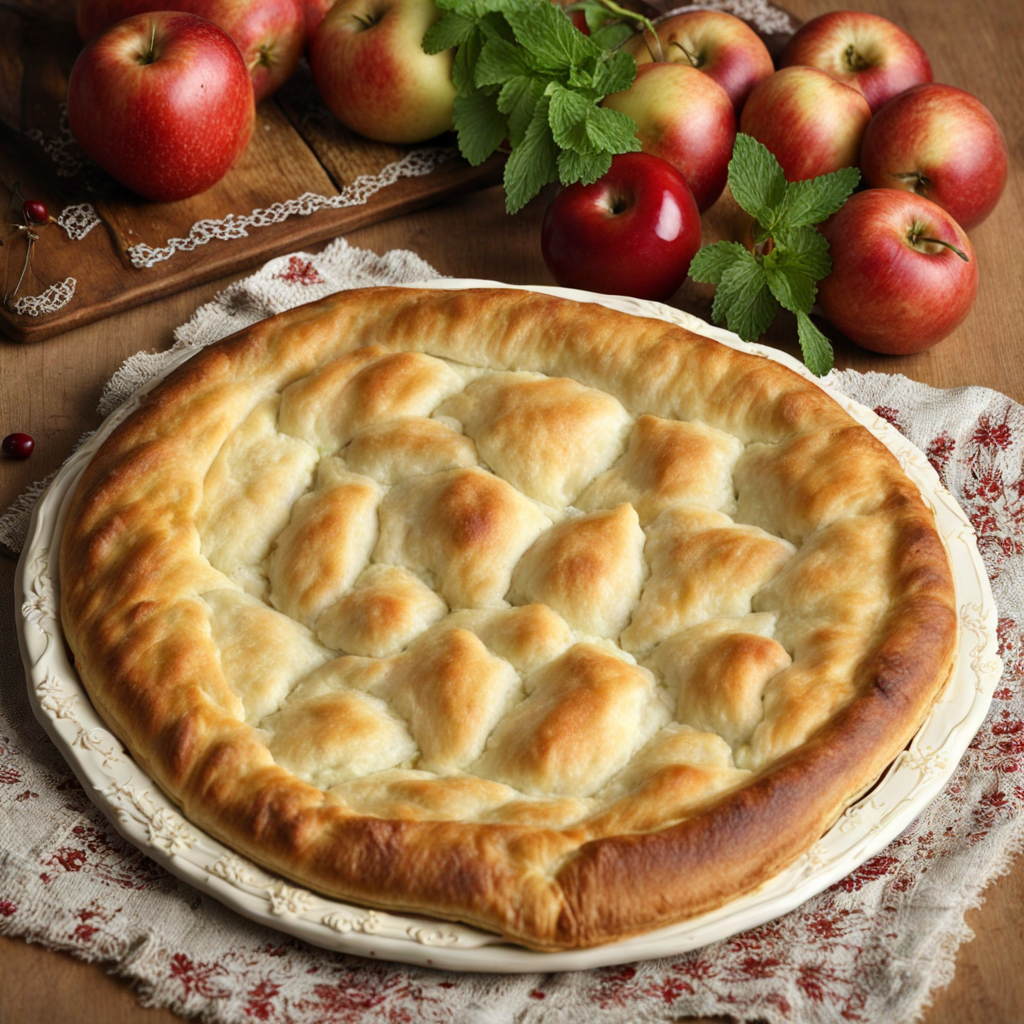Zimnica
Zimnica is a traditional Serbian dish that embodies the essence of the region's culinary heritage. This delightful preparation primarily consists of seasonal vegetables, such as peppers, eggplants, tomatoes, and carrots, which are carefully selected at their peak ripeness. The fresh produce is then preserved through a unique process of pickling, often enhanced with a blend of spices like garlic, paprika, and bay leaves. The result is a vibrant medley of colors and flavors that captures the essence of summer in every bite, making it a beloved staple during the colder months when fresh vegetables are scarce. Traditionally, Zimnica is made in large batches, allowing families to enjoy the tastes of summer throughout the year. The method of preparation varies from household to household, with some opting for a spicy kick by adding chili peppers, while others prefer a milder taste. The vegetables are usually sliced and layered in jars, then submerged in a vinegar-based brine that not only preserves them but also infuses the dish with a tangy richness. This process allows the flavors to meld beautifully, creating a complex taste that has both sweet and sour notes, making Zimnica a versatile accompaniment to many meals. Serving Zimnica is an experience in itself, as it pairs wonderfully with meats, cheeses, and bread, adding a burst of flavor to any dish. It can be enjoyed as a relish, a side dish, or even as a topping for sandwiches, showcasing its adaptability in various recipes. The dish not only represents a connection to Serbian culture and traditions but also highlights the importance of preserving seasonal produce. For those looking to explore new tastes, Zimnica offers a unique combination of textures and flavors that is both nostalgic and refreshing, inviting everyone to savor the richness of Serbian cuisine.
How It Became This Dish
The History of Зимница (Zimnica): A Serbian Culinary Tradition Origins and Meaning The term "zimnica" in Serbian translates to "winter preserves." This culinary tradition involves the preparation of various fruits and vegetables to be stored and consumed during the colder months, ensuring that the flavors of summer are not lost to the harshness of winter. The practice of preserving food has ancient roots, with methods that date back thousands of years across many cultures. In Serbia, zimnica is not merely a means of survival; it represents a connection to nature, community, and a rich cultural heritage. The origins of zimnica can be traced back to the agrarian societies of the Balkans, where the harvest was an essential part of life. Farmers would gather their crops at the end of summer and early autumn, and the preservation of surplus food became a necessity. The methods of preservation were diverse and included pickling, fermenting, drying, and canning. Each technique allowed families to savor the bounty of the harvest long after the last tomatoes had been picked or the last peppers had been gathered. Cultural Significance Zimnica holds a significant place in Serbian culture, showcasing the importance of food in social and familial bonds. The process of making zimnica is often a communal affair, with family members and friends coming together to prepare and preserve food. This ritual fosters a sense of togetherness, as people share recipes, traditions, and stories while working side by side. The act of preparing zimnica is imbued with meaning, transforming it from a simple task into a cherished memory. Moreover, zimnica is a celebration of the seasons and the agricultural cycle. It reflects the deep respect that Serbians have for their land and its produce. The ingredients used in zimnica are typically seasonal, emphasizing a sustainable approach to food that honors local ecosystems. Common ingredients include peppers, tomatoes, cucumbers, and various fruits like plums and apples. Each region of Serbia has its specialties, showcasing the diversity of the country's agricultural bounty. Development Over Time Historically, the process of making zimnica has evolved alongside technological advancements and changing societal norms. In the early 20th century, traditional methods of preservation were predominant, relying on salt, vinegar, and sugar as primary ingredients. Families often used large clay pots or jars to store their preserves, which were kept in cool, dark places to prolong shelf life. Each family had its own unique recipes, passed down through generations, that reflected regional tastes and preferences. With the advent of industrialization and the introduction of modern canning techniques in the mid-20th century, the production of zimnica underwent significant changes. The availability of glass jars and improved sealing methods allowed for longer shelf life and greater accessibility. While some families still adhered to traditional practices, many began to adopt these new methods, leading to a gradual shift in the way zimnica was made. In recent years, there has been a resurgence of interest in traditional foods and artisanal methods of preparation. This movement, often referred to as the "slow food" movement, emphasizes the importance of local produce, seasonal cooking, and traditional techniques. Many young Serbians are now returning to their roots, learning from their elders and finding pride in the art of making zimnica. This revival is not only about preserving food but also about preserving cultural identity and heritage in an increasingly globalized world. Zimnica Today Today, zimnica is celebrated across Serbia, particularly during the late summer and early autumn months when the harvest is at its peak. Local fairs and markets often showcase traditional zimnica products, and families take pride in their homemade preserves. Whether it's spicy ajvar (a pepper-based condiment), pickled cucumbers, or sweet plum jam, each jar of zimnica tells a story of labor, love, and tradition. The popularity of zimnica has also transcended national borders, with Serbian communities around the world continuing to honor this tradition. In diaspora communities, zimnica serves as a way to maintain cultural ties and a connection to heritage, allowing Serbs far from home to preserve and share a piece of their culinary history. In modern Serbian cuisine, zimnica is often incorporated into daily meals, enhancing dishes with vibrant flavors and seasonal ingredients. It serves as a reminder of the importance of local produce and the time-honored practices of preservation. From family gatherings to festive celebrations, zimnica remains a staple that embodies the spirit of Serbian hospitality. Final Thoughts The history of zimnica is a testament to the resilience of cultural traditions in the face of changing times. It reflects the deep connection that Serbians have with their land, their food, and each other. As we look to the future, the art of making zimnica will likely continue to evolve, but its essence will remain the same—a celebration of life, community, and the cyclical nature of the seasons. In a world that increasingly values convenience over tradition, the revival of zimnica serves as a powerful reminder of the importance of food heritage. It encourages us to appreciate the labor that goes into our meals and to honor the stories that have shaped our culinary landscapes. Ultimately, zimnica is more than just a method of preservation; it is a living legacy that nourishes both body and spirit.
You may like
Discover local flavors from Serbia







